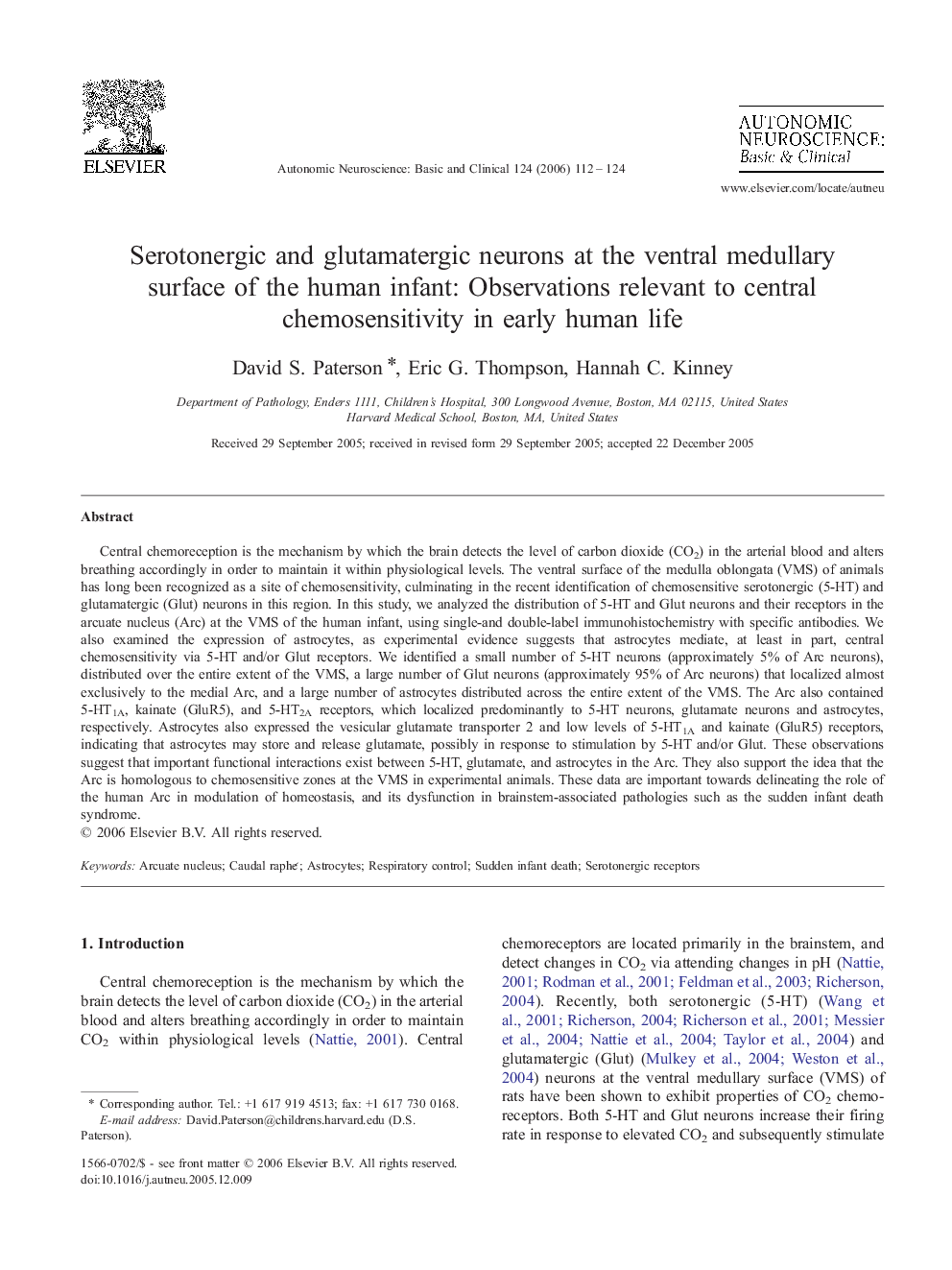| Article ID | Journal | Published Year | Pages | File Type |
|---|---|---|---|---|
| 3035961 | Autonomic Neuroscience | 2006 | 13 Pages |
Central chemoreception is the mechanism by which the brain detects the level of carbon dioxide (CO2) in the arterial blood and alters breathing accordingly in order to maintain it within physiological levels. The ventral surface of the medulla oblongata (VMS) of animals has long been recognized as a site of chemosensitivity, culminating in the recent identification of chemosensitive serotonergic (5-HT) and glutamatergic (Glut) neurons in this region. In this study, we analyzed the distribution of 5-HT and Glut neurons and their receptors in the arcuate nucleus (Arc) at the VMS of the human infant, using single-and double-label immunohistochemistry with specific antibodies. We also examined the expression of astrocytes, as experimental evidence suggests that astrocytes mediate, at least in part, central chemosensitivity via 5-HT and/or Glut receptors. We identified a small number of 5-HT neurons (approximately 5% of Arc neurons), distributed over the entire extent of the VMS, a large number of Glut neurons (approximately 95% of Arc neurons) that localized almost exclusively to the medial Arc, and a large number of astrocytes distributed across the entire extent of the VMS. The Arc also contained 5-HT1A, kainate (GluR5), and 5-HT2A receptors, which localized predominantly to 5-HT neurons, glutamate neurons and astrocytes, respectively. Astrocytes also expressed the vesicular glutamate transporter 2 and low levels of 5-HT1A and kainate (GluR5) receptors, indicating that astrocytes may store and release glutamate, possibly in response to stimulation by 5-HT and/or Glut. These observations suggest that important functional interactions exist between 5-HT, glutamate, and astrocytes in the Arc. They also support the idea that the Arc is homologous to chemosensitive zones at the VMS in experimental animals. These data are important towards delineating the role of the human Arc in modulation of homeostasis, and its dysfunction in brainstem-associated pathologies such as the sudden infant death syndrome.
